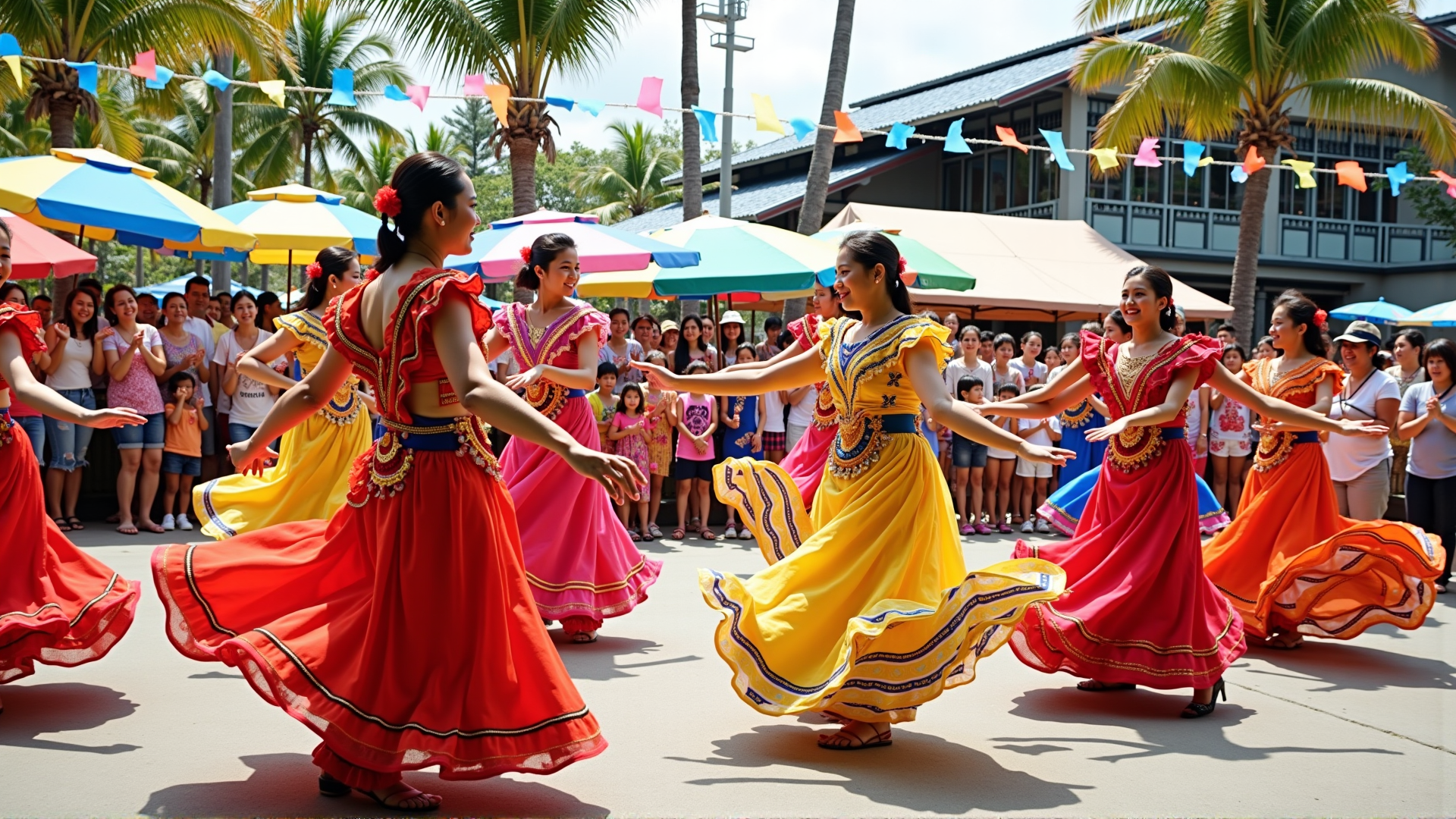Nestled in Southeast Asia, the Philippines is a tapestry of rich cultural heritage that captivates and inspires all who visit. This archipelago of over 7,000 islands is a melting pot of influences, blending indigenous traditions with colonial imprints, creating a unique cultural mosaic.
At the heart of the Filipino spirit lies a love for art in its many forms. Filipino art, whether it's the intricate weaving of the Ifugao tribes or the vibrant street murals of Manila, tells stories of resilience and identity. Traditional forms merge with contemporary expressions, showcasing the evolving narrative of the nation's people.
Festivals in the Philippines are unparalleled spectacles that truly bring its culture to life. Each event is an explosion of color, movement, and sound, deeply rooted in history and tradition. The Sinulog Festival, for example, transforms the streets of Cebu City into a sea of dance and music, honoring the Santo Niño. In another part of the country, in Panay, the Ati-Atihan Festival brings locals and visitors together in a lively celebration where everyone becomes kin.
Beyond art and festivals, local customs offer a window into the soul of Filipino society. Known for their warmth and hospitality, Filipinos welcome guests with an open heart and a generous spirit. The concept of "bayanihan," or communal unity, remains a cornerstone of community life, reflecting the collective effort to assist and support one another.
Cuisine also plays an essential role in understanding the cultural landscape. From the savory adobo to the refreshing sweetness of halo-halo, each dish is a testament to a history of cultural exchange and local ingenuity. Filipino food is not just sustenance; it is a shared experience that brings families and communities together.
Traditional music and dance, such as the bamboo dance of Tinikling or the soulful strains of the Kundiman, continue to be cherished and performed across the islands. These art forms connect younger generations with their roots, ensuring that the voices of their ancestors are never forgotten.
In essence, the cultural heritage of the Philippines is a living entity, a beautiful tapestry woven from various threads of history and tradition. It is a celebration of diversity, resilience, and the enduring spirit of its people. Whether through art, festivities, or daily customs, the soul of the Philippines shines brightly, inviting all to partake in its vibrant journey.
